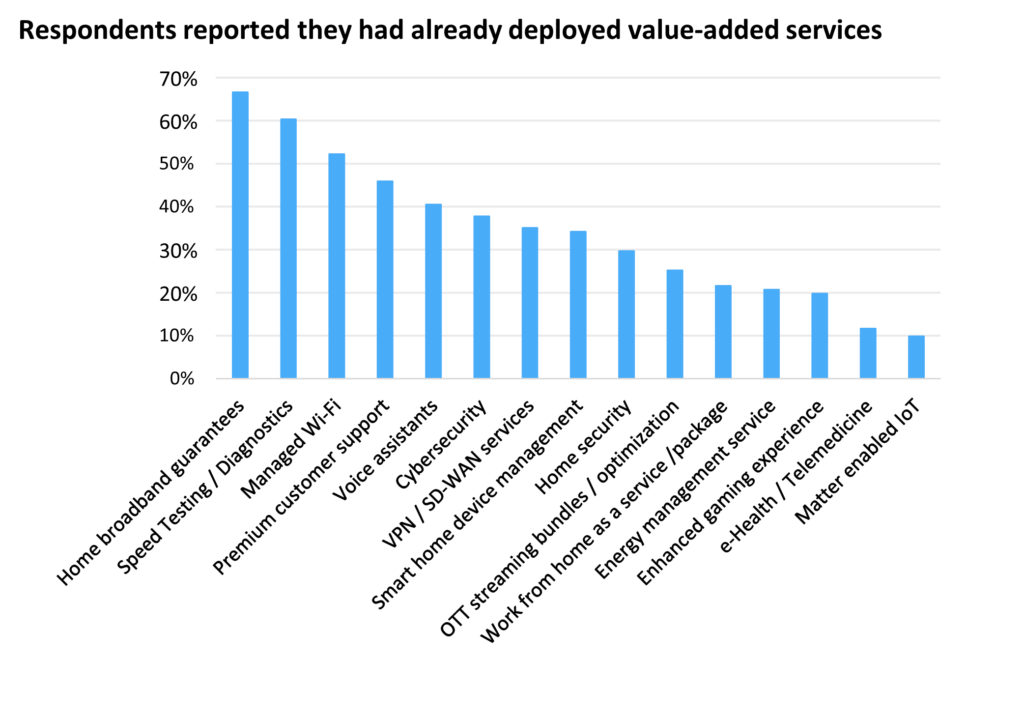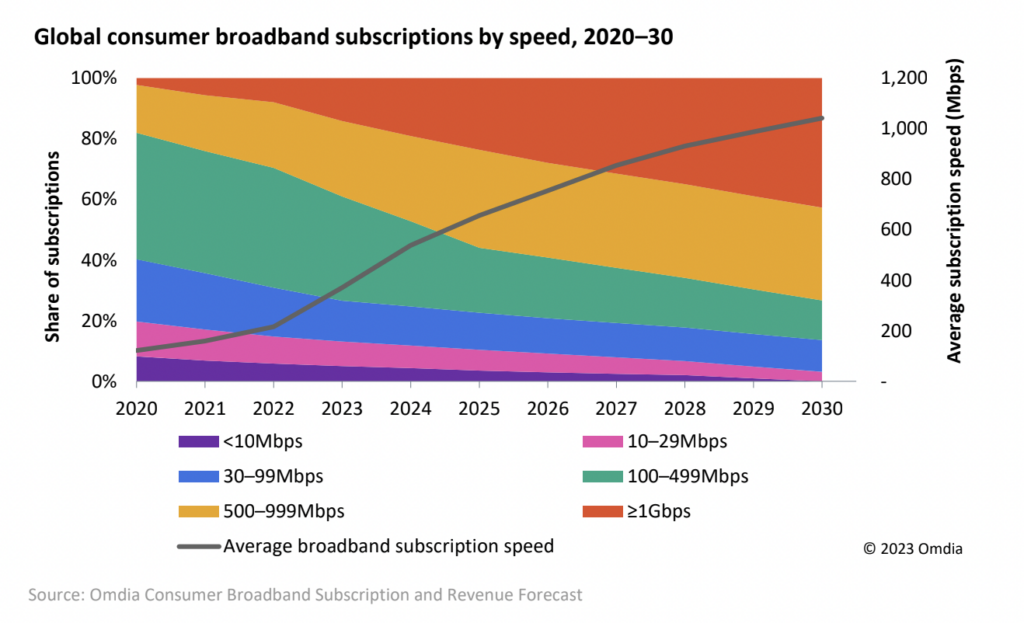Home broadband, Wi-Fi speed and reliability guarantees and speed testing/diagnostics were among the most popular services that providers plan to offer
Omdia and Broadband Forum have published a new report that shows global broadband service providers are focused on introducing technology that directly improves bandwidth and latency for value-added services. In fact, 72% of the more than 111 service providers interviewed said they plan to differentiate customer Quality of Experience (QoE) on a per-service basis.
Among the most popular value-added services that providers plan to offer were home broadband, Wi-Fi speed and reliability guarantees and speed testing/diagnostics. Sixty percent of respondents stated that they had already deployed such services. Further, managed Wi-Fi, premium customer support, voice assistants and cybersecurity also came up often in responses.

“In the future, delivering a great broadband experience will be less about speed and more about providing value-added and tailored services to the end customer,” Broadband Forum Vice President Strategic Marketing and Business Development Craig Thomas said. “Open standards can deliver the sort of service-aware and application-appropriate network capabilities that can help providers improve their products and provide customers with greater user experience.”
However, despite the increased focus on services, the report still found that broadband speeds are getting notably faster and the expectation is that by 2030, 44% of all consumer subscriptions globally will offer speeds of 1 Gbps or more with the average subscription speed topping just over 1 Gbps. “This is a rapid rise over a 10-year period starting 2020, when the percentage of gigabit subscriptions was only 2% and the average subscription speed was 122Mbps,” stated the report, adding that one key driver is the evolution of broadband network technology from copper-based technologies such as xDSL to fiber-optic infrastructure and Passive Optical Network (PON). As of 2022, according to the report, 67% of consumer broadband subscriptions were delivered over fiber, and this will rise to 77% by the end of the decade.

Still, the firms argue that while speed remains important, the mere fact that speed is improving so much and on a global scale means it is becoming increasingly critical for providers to find other ways to differentiate, particularly as in-home applications like gaming and video rise in frequency. “Service providers are turning their marketing attention to overall service quality of experience (QoE),” the report concluded. “The home network is critical to this venture, because it is the final part of the network that connects the user’s end devices. Although not technically part of the traditional telecommunications operator’s domain, the home network has now become a key area of focus and investment for broadband service providers around the world.”

